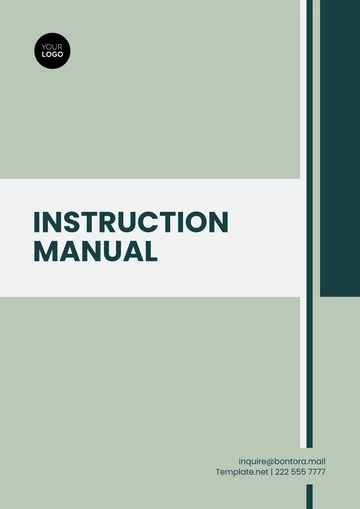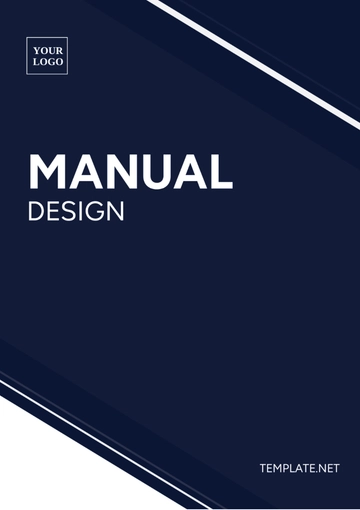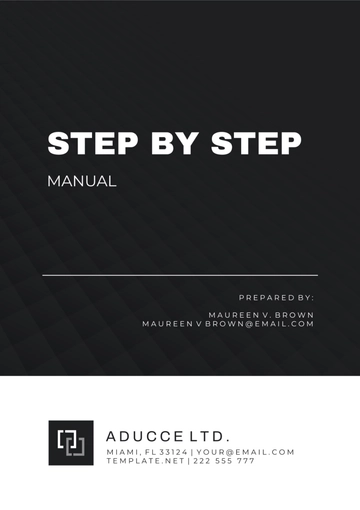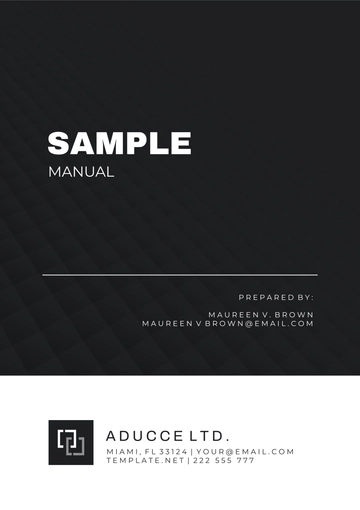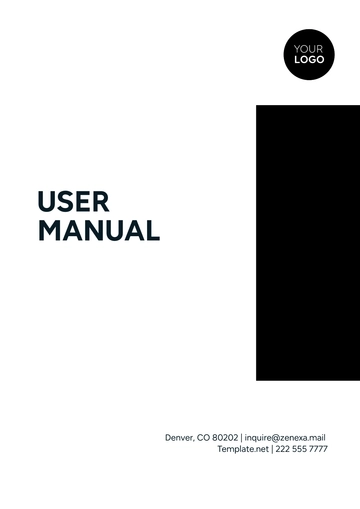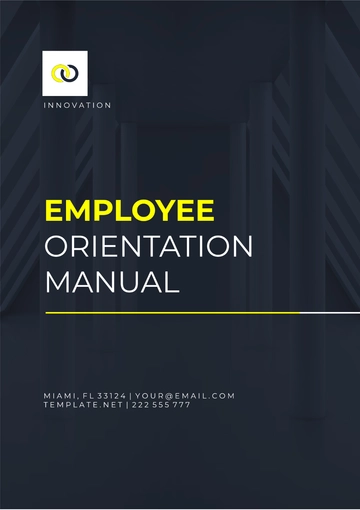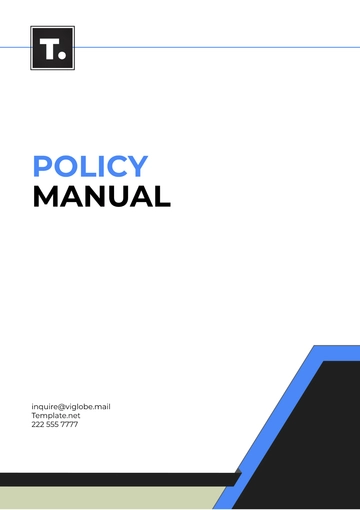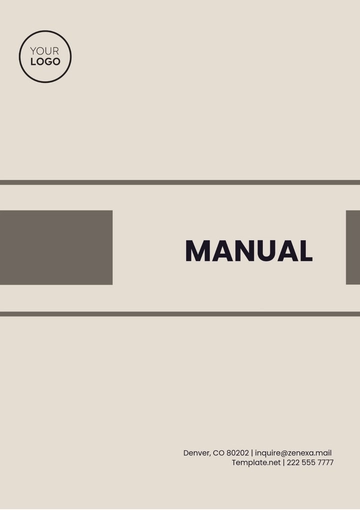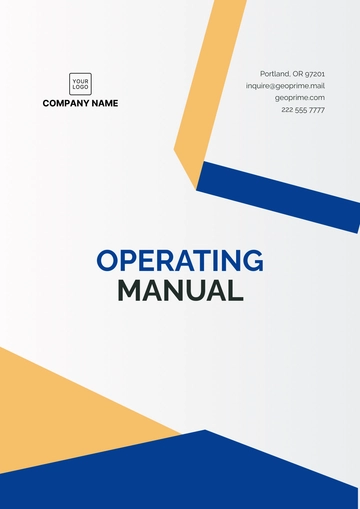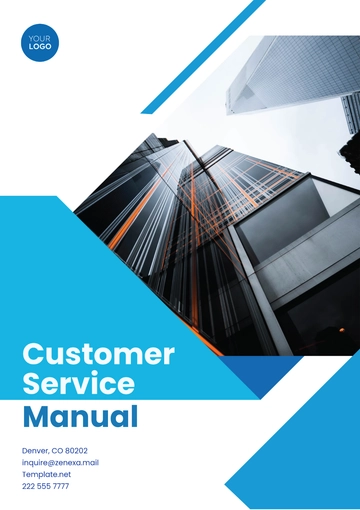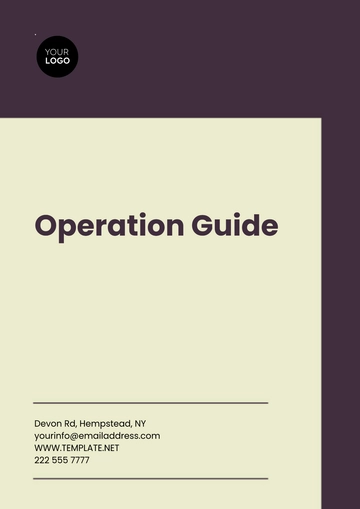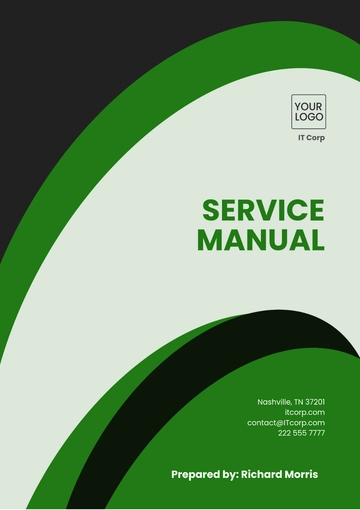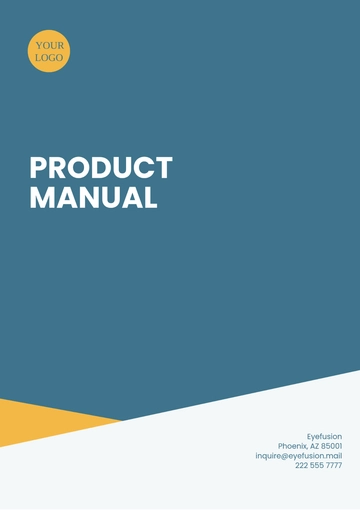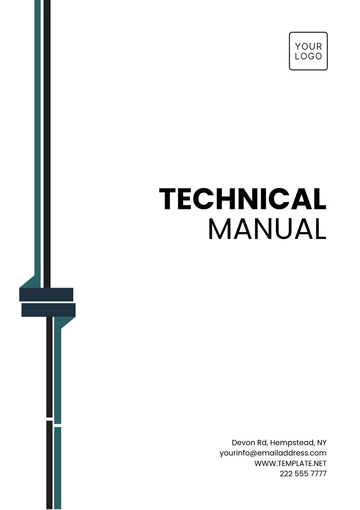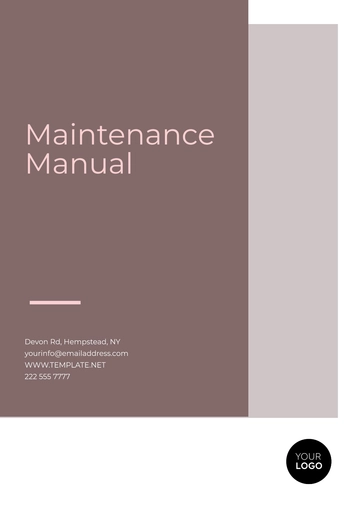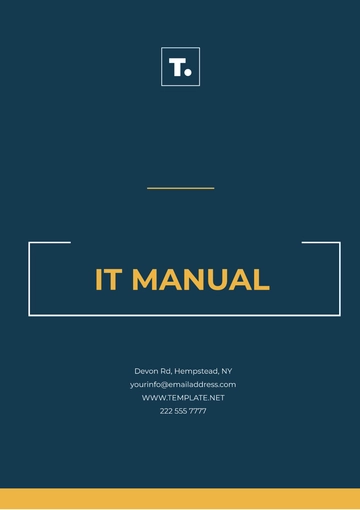Free Finance Accounts Risk Management Manual
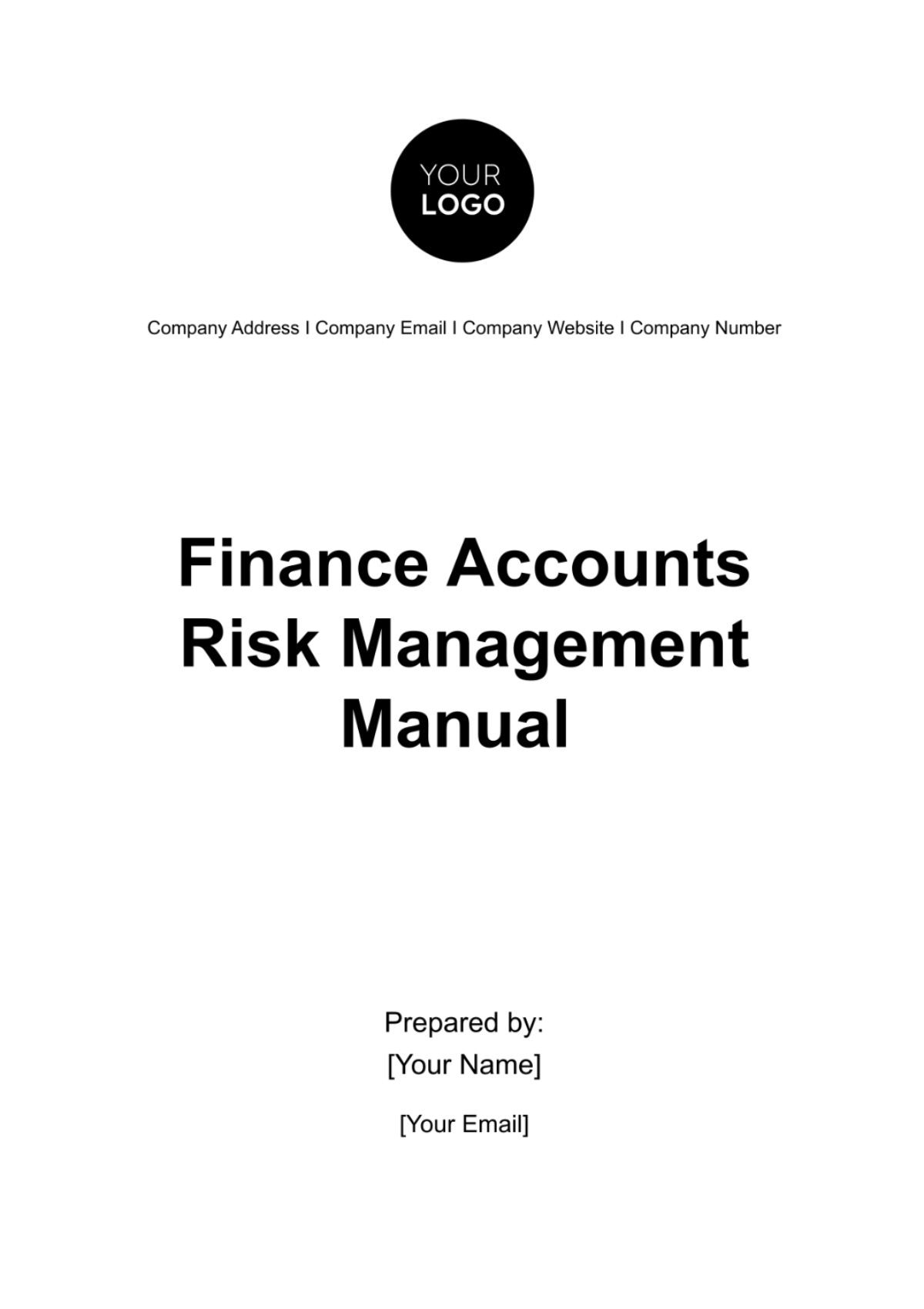
I. Introduction
Purpose of this Manual
This manual is designed to provide a comprehensive guide for managing financial risks within [Your Company Name]. It serves as a reference for identifying, assessing, controlling, and monitoring financial risks effectively. The document is aimed at enhancing the understanding and implementation of risk management practices across all levels of the organization.
Scope of Financial Risk Management
The scope of this manual covers all financial risks that could impact [Your Company Name], including market risk, credit risk, liquidity risk, and operational risk. It addresses risks arising from various sources such as financial transactions, customer relationships, supply chain operations, and external market changes.
Overview of Risk Management Principles
Risk management involves identifying potential risks before they occur, assessing their potential impact, and implementing strategies to mitigate or eliminate the risk. The principles include a commitment to a culture of risk awareness, a proactive approach to identifying emerging risks, and continuous improvement in risk management strategies.
II. Risk Management Framework
Definition of Risk in the Financial Context
Risk is defined as the possibility of an event occurring that will have an impact on the achievement of [Your Company Name]'s objectives. In the financial context, this typically relates to uncertainty in financial markets, potential losses, and threats to financial stability.
Risk Management Policy
The policy sets out the approach to managing risk within [Your Company Name], including the company's risk appetite and risk tolerance levels. It provides the basis for procedures, responsibilities, and reporting structures.
Roles and Responsibilities
Board of Directors:
Ensure that [Your Company Name]'s risk management policies and procedures are in place and functioning correctly. Approve the risk management policy, including setting risk appetite and tolerance.
Risk Management Committee:
Develop and review the company's risk management strategies and report significant risks to the board. Regularly monitor and assess the company's risk exposure and the effectiveness of its management strategies.
Chief Risk Officer (CRO):
Lead the risk management function and ensure that the policies and strategies are implemented effectively. Report on risk exposures and incidents to the Risk Management Committee and the Board.
Department Heads:
Identify and manage risks within their departments, ensuring employees adhere to established policies and procedures. The report identified risks and mitigation efforts to the CRO and the Risk Management Committee.
Employees:
Understand and comply with [Your Company Name]'s risk management policies and procedures. Report risk incidents or near misses to their supervisors or the risk management team.
Risk Appetite and Tolerance
Quantitative Measures: Establish quantitative measures such as earnings volatility, capital adequacy, and liquidity ratios that [Your Company Name] is willing to accept.
Qualitative Measures: Set qualitative benchmarks related to brand reputation, customer satisfaction, and employee morale.
Setting Risk Tolerance
Ensure that the risk tolerance is aligned with [Your Company Name]'s strategic objectives and market position.
III. Risk Identification
In [Your Company Name], risk identification is a continual process integral to the organization's operations. This process begins with understanding the different types of financial risks that the company might face.
Credit risk is the possibility that a borrower will default on their obligations, impacting our financial health.
Market risk involves potential losses due to market fluctuations affecting our assets or liabilities.
Liquidity risk is the risk of being unable to meet short-term financial demands.
Operational risk is the risk of loss from failed or inadequate company processes or systems.
To identify these risks effectively, [Your Company Name] employs various tools and techniques. The SWOT (Strengths, Weaknesses, Opportunities, and Threats) analysis helps in identifying strategic risks by looking at internal and external factors. Risk registers are maintained to keep a dynamic list of identified risks along with their impact, probability, and control measures.
Financial modeling is used to simulate various scenarios and identify potential risks in complex financial situations. Once risks are identified, they are recorded meticulously in a risk register and reported regularly to management and the Board. The risk register serves as a critical document, capturing the nature of the risk, its magnitude, potential impact, and proposed mitigation strategies. Reporting frequencies are typically set based on the nature and severity of the risks, ensuring that the management and the Board are well-informed and able to make timely decisions.
IV. Risk Assessment and Measurement
At [Your Company Name], risk assessment and measurement are about understanding and quantifying the risks we have identified, enabling informed decision-making and strategic planning.
We employ both qualitative and quantitative methods to ensure a comprehensive assessment. Qualitative methods, like expert judgment, brainstorming sessions, and scenario analysis, allow us to leverage experiences and insights from various stakeholders to gauge risk impact and likelihood. In contrast, quantitative methods involve statistical analysis and model-based approaches like sensitivity analysis, which provide a numerical basis for risk evaluation. One of the specific models used for risk assessment is the Value at Risk (VaR) model, which quantifies the maximum expected loss over a specific period at a given confidence level, providing a clear metric for market risk exposure.
Additionally, we conduct stress testing and scenario analysis to understand the potential impact of extreme but plausible events on our financial position. By simulating various adverse business conditions, we can prepare and adapt our strategies to mitigate potential impacts.
The internal risk rating system further aids in classifying and prioritizing risks, allowing [Your Company Name] to focus resources effectively. Each identified risk is rated based on criteria such as its financial impact, likelihood of occurrence, and the effectiveness of current controls. This rating system helps in ensuring that management attention is directed toward the most significant risks.
V. Risk Control and Mitigation
Risk control and mitigation at [Your Company Name] involve taking proactive steps to minimize potential losses or avoid risks altogether. Our strategies are diverse, including risk avoidance, reduction, sharing, and transfer. Avoidance may involve not entering into certain markets or avoiding investment in volatile sectors, while reduction strategies might include diversifying investments or implementing strict operational controls.
We also consider risk sharing, perhaps through partnerships or joint ventures where the risk is shared with other entities, or risk transfer, typically through insurance or hedging strategies using various financial instruments. Derivatives, such as futures, options, and swaps, are particularly used for hedging against market risks, currency risks, or commodity price risks.
Alongside these strategies, [Your Company Name] has established a robust system of internal controls and procedures to prevent and mitigate risks. This includes clear authorization requirements for significant transactions, regular audits and reviews, and a comprehensive set of policies and procedures that guide day-to-day operations.
Compliance with legal and regulatory requirements is also a critical part of our risk control framework. We ensure that all our risk management activities are in line with the latest laws and regulations, and we keep abreast of any changes in the regulatory environment that might affect our risk exposure.
VI. Risk Monitoring and Reporting
Continuous Monitoring Processes
Regular Reviews: Conduct regular reviews of risk exposure, control effectiveness, and mitigation actions.
Dynamic Adjustment: Adjust risk management strategies and practices as the business environment and [Your Company Name]'s risk profile change.
Key Risk Indicators (KRIs)
Indicator Selection: Select KRIs that effectively represent the key drivers of each significant risk.
Regular Review: Periodically review and update the KRIs to ensure they remain relevant and effective.
Performance and Threshold Reporting
Threshold Setting: Establish performance thresholds that, when breached, trigger increased scrutiny or action.
Escalation Procedures: Define procedures for escalating breaches of risk thresholds to the appropriate level of management.
Incident Management and Reporting
Incident Handling: Establish protocols for responding to and managing risk incidents as they occur.
Post-Incident Analysis: Conduct post-incident analyses to learn from the event and improve future risk response.
VII. Technology in Risk Management
Information Systems and Risk Management Software
System Integration: Integrate risk management software with other business systems for real-time risk data and analysis.
Software Features: Utilize software features like risk heat maps, dashboards, and predictive analytics for effective risk management.
Data Security and Privacy
Data Classification: Classify data according to sensitivity and apply corresponding security measures.
Access Controls: Implement robust access controls to ensure only authorized personnel can access sensitive risk management information.
Technology-Enabled Risk Analysis Tools
Artificial Intelligence: Use AI for predictive risk modeling and anomaly detection.
Machine Learning: Apply machine learning techniques to improve risk identification and assessment over time.
VIII. Case Studies and Best Practices
To continually enhance our risk management practices, [Your Company Name] actively studies and learns from both successes and failures in risk management, both within and outside the organization. We analyze case studies of effective risk management strategies and notable failures to extract valuable lessons and best practices. This not only helps in avoiding past mistakes but also in adopting strategies that have been successful in managing risks.
Additionally, we benchmark our practices against industry standards and strive to adhere to recognized risk management frameworks. This helps in ensuring that our risk management capabilities are robust and in line with the best practices in the industry.
IX. Training and Competency
[Your Company Name] is committed to building a culture of risk awareness and competency among all staff members. To this end, we provide regular training programs and workshops on various aspects of risk management, tailored to different roles and levels within the organization. These programs cover the principles, tools, and procedures of risk management, ensuring that all employees understand their role in managing risk.
Additionally, we encourage and facilitate professional development and continuing education in risk management. This includes supporting staff in obtaining relevant certifications and fostering a culture of lifelong learning and improvement in risk management practices.
X. Review and Update of Risk Management Practices
Given the dynamic nature of business and risk, [Your Company Name] regularly reviews and updates its risk management policies, procedures, and practices. This ensures that our risk management framework remains effective and relevant. The review process is comprehensive, considering changes in the business environment, regulatory landscape, and organizational objectives. Changes to policies or procedures are communicated clearly and effectively to all relevant parties, ensuring that the entire organization stays informed and aligned.
Furthermore, we have a process in place for staying informed about regulatory changes and integrating them into our risk management framework, ensuring compliance and resilience in the face of evolving risk landscapes.
- 100% Customizable, free editor
- Access 1 Million+ Templates, photo’s & graphics
- Download or share as a template
- Click and replace photos, graphics, text, backgrounds
- Resize, crop, AI write & more
- Access advanced editor
Safeguard your financial assets with Template.net's Finance Accounts Risk Management Manual Template. This professional tool is both editable and customizable, designed to guide you through identifying, assessing, and mitigating financial risks effectively. Equip your team with a comprehensive manual that ensures a proactive approach to financial risk management, so start editing the template using our Ai Editor Tool now!
